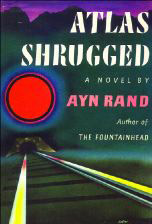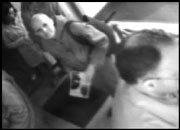1. A first edition doesn’t mean first printing. Wessel & Lieberman (208 First Ave. S., 206-682-3545) has a tattered copy of J.D. Salinger’s The Catcher in the Rye. “First Modern Library Edition” is printed on the backside of the title page, which explains why it’s priced at $325. While this is a first edition, per se, it is not a first printing—the Modern Library reprints literature. Still, Wessel & Lieberman carries the book because, as bookseller William Kiesel points out,”[Salinger] is such an elusive author, and that book is so hard to come by that any hardcover that’s in good shape is worth something.”
2. Older does not always mean more valuable. The first printing of The Bell Jar, Sylvia Plath’s memoir published under the pseudonym Victoria Lucas just after her death, is priced at a market value of $5,000—worth more than Alexandre Dumas’ The Count of Monte Cristo, even though the latter is more than 100 years older. The value of The Bell Jar is enhanced by the author’s popularity; the rarity of seeing her work published under a false name; and (probably) the spectacle of her suicide, which she carried out by placing her head in a gas oven.
3. Understand that market value is relative. Books without a dust jacket, or that are water-damaged, torn, faded, stinky, or ex- library books, are not wise investments. On the other hand, there are innumerable ways a book’s value can increase: A few years ago, at Gregor Books (3407 California S.W., 206-937-6223), I ran across an Andy Warhol book in which Warhol himself had sketched a soup can on the title page. That copy has long since sold for well over that edition’s market value.
4. Acknowledge that personal value is even more relative. Wessel & Lieberman carries a 1936 first-edition book of poetry by Dorothy Parker, Not So Deep As a Well, in good condition, for $100. By comparison, Gregor Books has a copy of Love Is a Dog From Hell by Charles Bukowski, autographed and with an original illustration, for $2,000. Bukowski, however, may mean nothing to someone. I don’t need to explain why it makes more sense to spend $100 on something with meaning than $2,000 on something with none.
5. Forget about negotiating price. You are not buying cars, people. “In the collectible book market you should not expect to be haggling over the price,” says Theresa Calter of Gregor Books. Rare-book dealers have “spent a lot of time selecting books, bringing them in, and taking care of them. So the price is really the best competitive price they can give you.”
6. Know whom you’re dealing with. A legitimate bookseller will never be reluctant to tell you everything you need to know about why a book has been priced the way it has. “For those who haven’t had an opportunity to learn more before they make that big investment, go with a reputable dealer,” advises Calter. “Someone who’s been around a while.” Local and national inventories are usually posted on the Web, at sites like www.abebooks.com, but be wary: Usually anyone can post anything at any price, so if you don’t know what the price should be, you’re at a disadvantage. Go with a reputable dealer.
7. Take the time to look around. You might come across something interesting for a steal. Arundel Books, a used bookstore on First Avenue, has (at the time of this writing) a beautifully illustrated early reprint of one of the Alice in Wonderland books for $16.95—one antiquarian bookseller I talked to said he could probably resell it for $45.
8. Do your homework. Most local booksellers recommend taking the course in rare books offered by David Gregor. (Contact Gregor Books for more information.) Or, if you are industrious enough, read up on the subject yourself. Collected Books: The Guide to Values 2002 Edition lists the current market price of all collectible books; First Editions: A Guide to Identification describes the different methods by which publishers indicate whether a book is a first edition (every publisher is different); and ABC for Book Collectors defines bookish terms like “frontispiece” and “inside flap.”
9. Don’t lose sight of things. These are only books we’re talking about.







